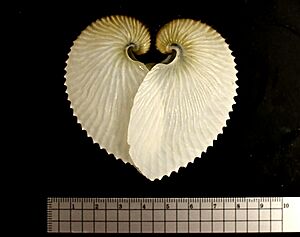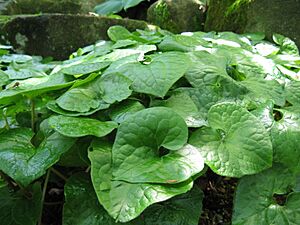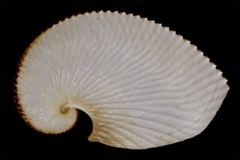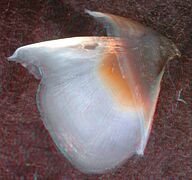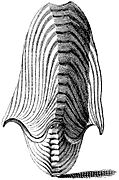Greater argonaut facts for kids
Quick facts for kids Greater argonaut |
|
|---|---|
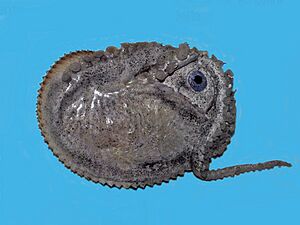 |
|
| Argonauta argo inside its shell | |
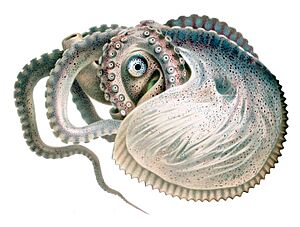 |
|
| Illustration from I Cefalopodi viventi nel Golfo di Napoli (1896) | |
| Conservation status | |
| Scientific classification | |
| Genus: |
Argonauta
|
| Species: |
argo
|
The greater argonaut, known scientifically as Argonauta argo, is a type of octopus that lives in the open ocean. It belongs to a group of octopuses called Argonauta. In China, its name means "white sea-horse's nest."
Argonauta argo was the very first argonaut species ever described. This means it's the main example for its entire group. The first specimen was found in the Mediterranean Sea.
Contents
What Does the Greater Argonaut Look Like?
The greater argonaut is the biggest species in its group. It also makes the largest "eggcase," which is like a special shell for its eggs. Live argonauts have a cool blue shine on their first pair of arms and around their eyes.
The eggcase has two rows of small, sharp bumps called tubercles along a narrow ridge. The walls of the shell are smooth, and the opening of the shell is thicker, forming distinct bumps or 'horns' on each side. The biggest A. argo eggcase ever found was 300 millimeters (about 12 inches) long!
Where Do Greater Argonauts Live?
Greater argonauts live all over the world in warm, tropical and subtropical waters. You can find them in oceans everywhere! There's a smaller version of this argonaut in the Mediterranean Sea, but it's still the same species.
Life and Habits of the Greater Argonaut
The female greater argonaut creates a very thin, paper-like eggcase. This eggcase wraps around her, much like a nautilus lives inside its shell. This is why argonauts are sometimes called "paper nautiluses."
Scientists believe that A. argo mainly eats other molluscs that live in the open ocean. Many animals also hunt the greater argonaut. For example, it has been found in the stomachs of a type of fish called Alepisaurus ferox in the Pacific Ocean.
Male greater argonauts become ready to reproduce when their mantle (body) is about 8 millimeters long. Females grow much larger, up to 100 millimeters. They start making their eggcase when they are about 6.5–7.0 millimeters long. Females usually lay their eggs when they are around 14–15 millimeters long, but this can vary depending on where they live. One small female A. argo in an 88-millimeter eggcase was thought to be carrying almost 49,000 tiny embryos!
In the open ocean, greater argonauts have been seen clinging to jellyfish. Scientists have studied this behavior. They observed a female A. argo holding onto the top surface of a jellyfish. The argonaut seemed to be eating parts of the jellyfish. It might have used the jellyfish for shelter or to hide from predators.
Observations of argonauts in captivity suggest that the wide webs on their top arms might help them catch food. When food touched these webs, an arm would quickly shoot out and grab the prey. Argonauts probably don't actively hunt. Instead, they wait for animals to bump into them in the open ocean.
Sometimes, many A. argo wash up on the beaches of South Africa and southern Australia. This usually happens between April and August, which is around the end of their egg-laying season.
Greater Argonauts in Culture
In Japan, this species is called "Aoi-gai" (葵貝 or アオイガイ). This means "Shell of Aoi." Japanese people have compared two argonaut eggcases placed together to the shape of a leaf from a plant called Asarum caulescens. Another Japanese name for it is "Kaidako" (貝蛸 or カイダコ), which means "Shell Octopus."
Gallery




